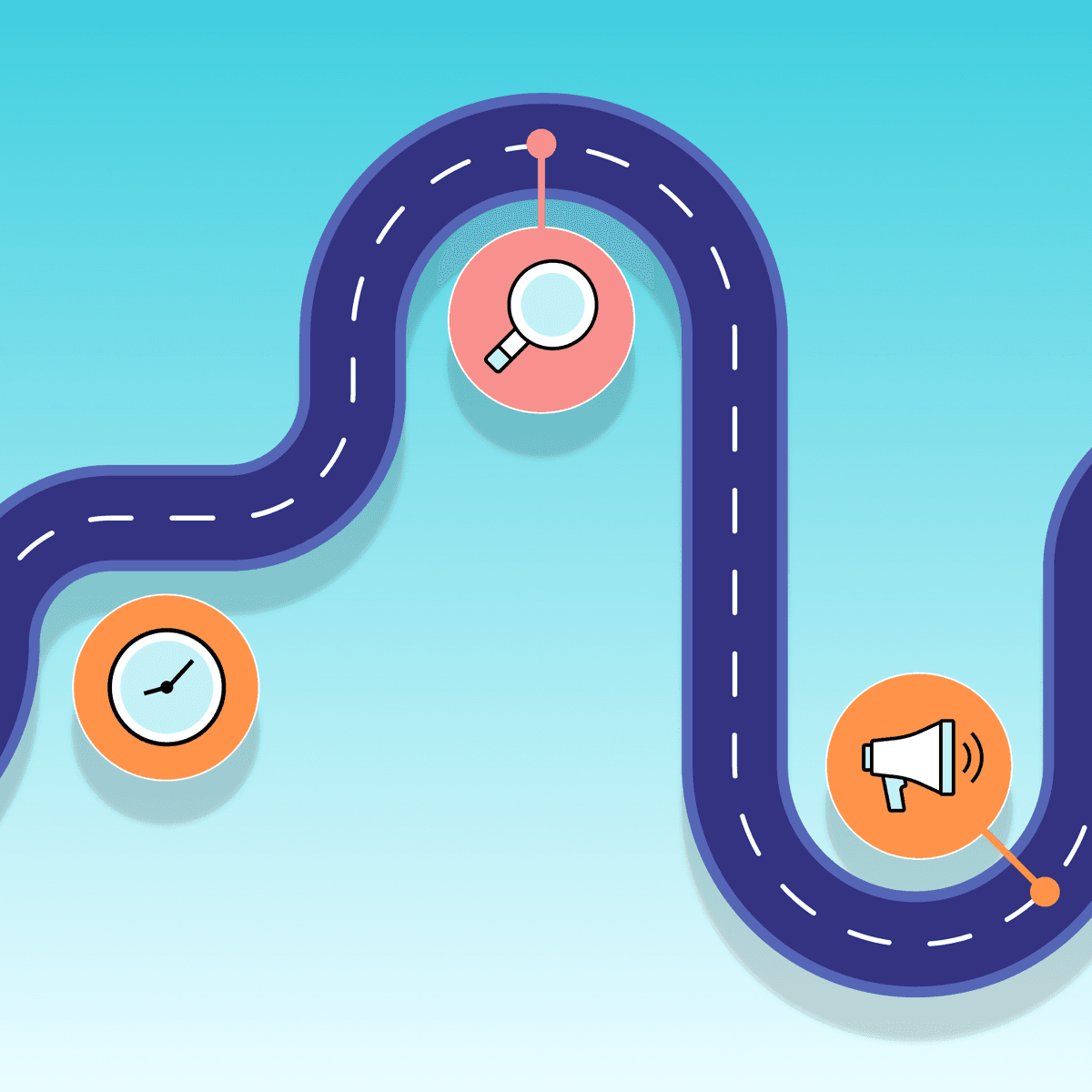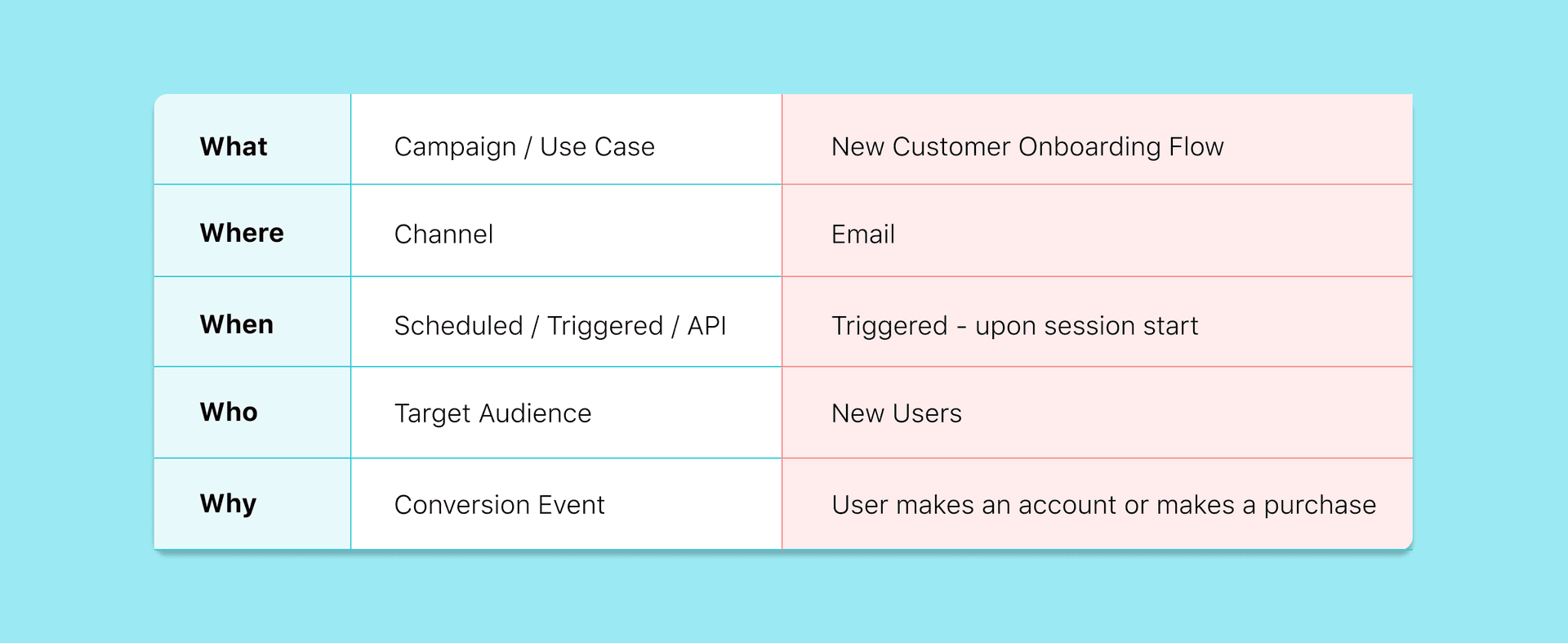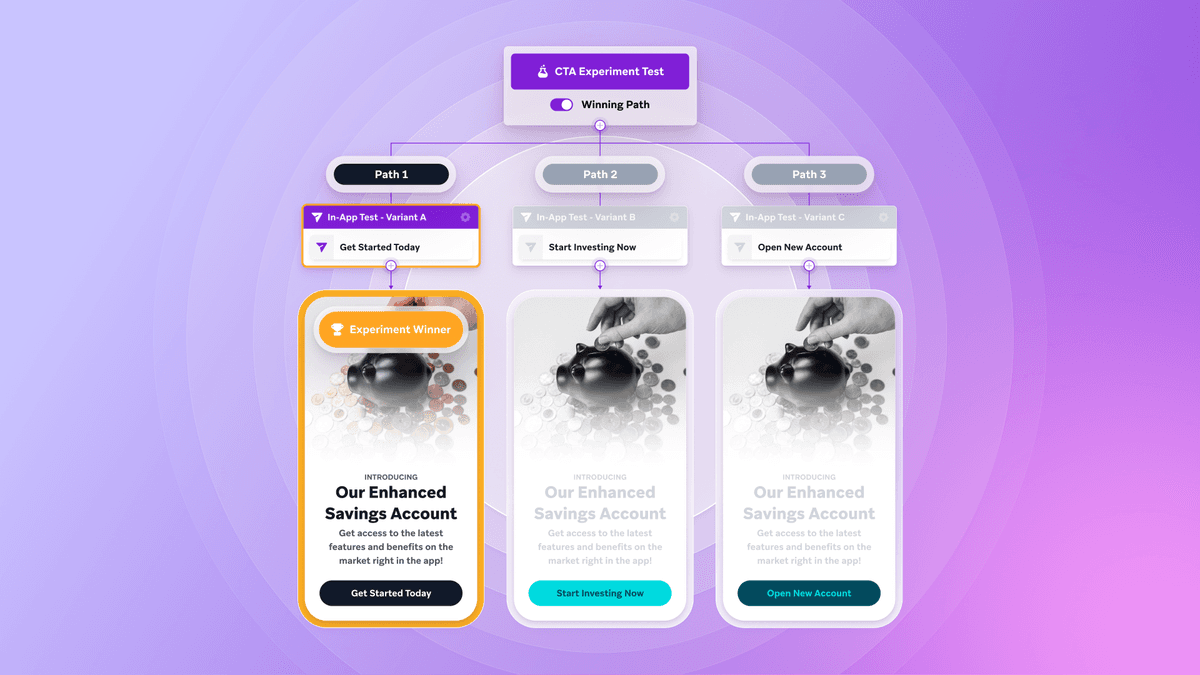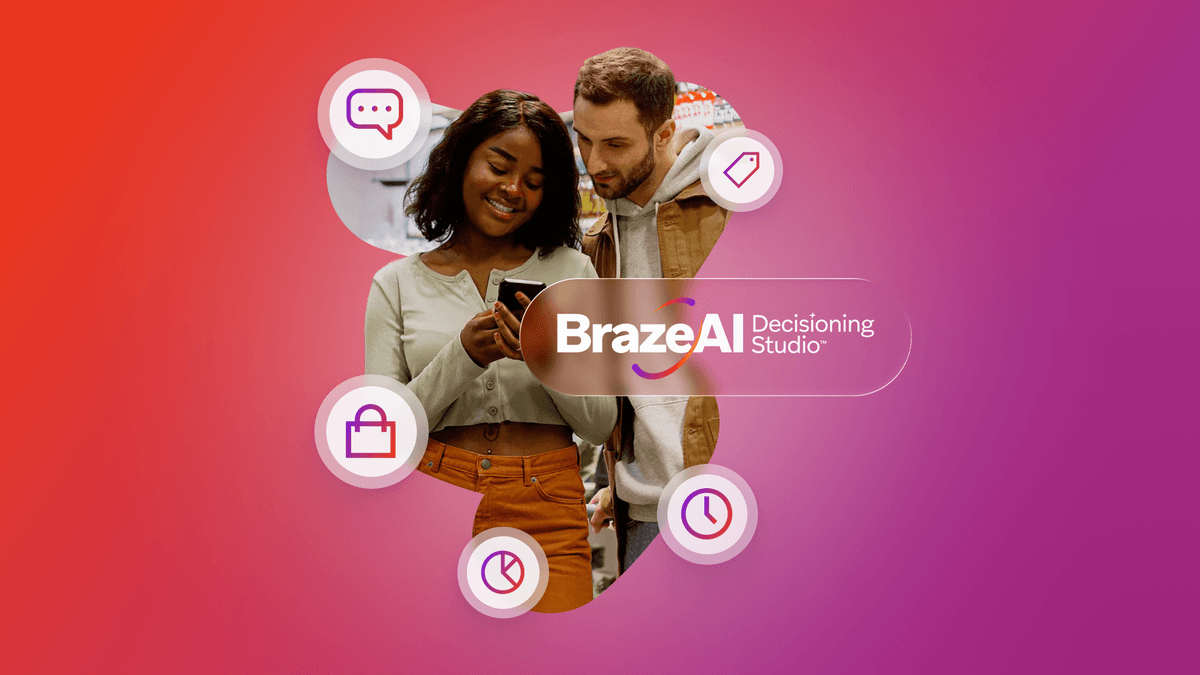Execute on Your Customer Engagement Strategy Through Effective Campaign Planning
Published on August 07, 2023/Last edited on August 07, 2023/6 min read

Published on August 07, 2023/Last edited on August 07, 2023/6 min read


Whether you’re migrating from another marketing platform or starting a new customer engagement strategy, campaign planning is crucial. Imagine your Braze onboarding process as if you’re taking a trip: By identifying your destination before your journey begins, it will be a lot easier for the GPS to generate your directions. The same goes for bringing your customer engagement strategy to life!By thoroughly planning campaigns or customer journeys as part of their Braze onboarding process, brands can reduce implementation costs while setting their teams up for long-term success. To get started, we’ve identified four simple steps:
Depending on your brand's industry and business model, the goals you’re looking to achieve may vary. Typically, a company’s leadership will come up with their key performance indicators (KPIs) for each year, month, quarter, etc. Any successful marketing leader understands that their team’s overall efforts should drive toward those KPIs in order to achieve success.
Examples of KPIs:
Understanding and pinpointing your brand’s specific KPIs plays a crucial role in helping you determine where your organization should focus your marketing efforts and what kinds of campaigns are needed to power those efforts.
High-value actions (HVAs) are user actions that lead to downstream conversions. In other words, users who perform high-value actions tend to generate more value than those who don't. If planned correctly, the results can impact customer loyalty with your brand or revenue (if planned correctly).
Examples of High-Value Actions:
Once you identify the specific high-value actions that drive your brand's key metrics, you can design campaigns that encourage users to complete them. For example, if you’re an eCommerce brand who wants to increase the sales of women’s accessories, what are the high-value actions that can increase those sales? In this particular scenario, you may want to log a custom event for a user who has favorited an item that falls under the accessory category and then use that logged event to retarget them. The HVA here would be for that user to “favorite items.” In a similar way, you might want to target users who have been viewing a certain accessory for a prolonged period and target them based off of this event. The HVA here would be “view content or page.”
Every brand defines their active and power users differently. For some companies, an active user is one who logs in at least once a week, or who has logged a certain number of sessions in a given period. For others, it might mean customers who have created a wishlist, left reviews, or referred friends. The way in which you choose to define active and power users should ultimately line up with your company KPIs.
Similarly, every brand has its own way of identifying their target audience. This could include active users, less-active users, or lapsed users that you wish to win back. With that in mind, you might focus on recent user activity, or lack thereof, and filter based on specific traits like the number of sessions, purchases made, or the last login date. The key point is that you get to decide how to define your audience in a way that matches your company's KPIs. Whether you're aiming to boost engagement, retain your existing customers, or reconnect with those who've drifted away, accurately pinpointing your audience is a vital first step.
How do people like to engage with your brand? For some users, it may be email and mobile push, while other individuals might be most responsive when they’re sent SMS. The most important part of choosing your channel strategy is remembering that your customers are human and engage in different ways. The most effective strategy relies on a mix of in-product and out-of-product messages, such as:
Each message you send has the potential to make or break the customer relationship you’ve been building with that individual. Given that, it’s important for brands to be thoughtful about gauging each customer’s context, wants, and needs in order to determine how best to time the outreach they send. Should the message be sent immediately, at a specific time (in their time zone), or triggered by an action (like abandoned cart or session start)?
In Braze, you can use Intelligent Timing (part of our Intelligence Suite) to automatically deliver messages to each user depending on each user’s optimal send time—that is, the time when that user is most likely to engage (open or click). This way, you can ensure that your users are receiving messages at their preferred time, something that can lead to higher engagement.
By taking this sort of strategic approach to your organization’s campaign and data planning during onboarding, you can more easily stay on track when it comes to your goals and increase the odds that you’re reaching and engaging your audience effectively. Taking the time to arrange your thoughts and map out your campaign really pays off. You'll notice the impact it has!
The Braze Onboarding team is dedicated to supporting your business needs and making sure that we understand the requirements needed to launch your campaigns in an organized and effective way. The table below is an example of how your ideas could be realized through campaign and data planning at Braze:

This is just one of the many different ways you could plan out a best-in-class campaign. The best part? You have the freedom to brainstorm and create what fits your business needs. There's a world of options out there!
While you’re planning your campaigns and customer journeys, starting small will help you avoid overwhelm and effectively reach your goals! Start by pinpointing your purpose (Your Why) and the business goals or Key Performance Indicators (KPIs) you aim to meet. Following this, determine your What, Who, Where, and When. With these elements in place, you'll soon be rolling out successful campaigns using Braze!
Want to learn more about onboarding at Braze and the teams that support Braze customers and their customer engagement activities? Check out Braze for Success for information on Customer Success, Technical Support, Email Deliverability, and other key Braze teams.
Sign up for regular updates from Braze.





